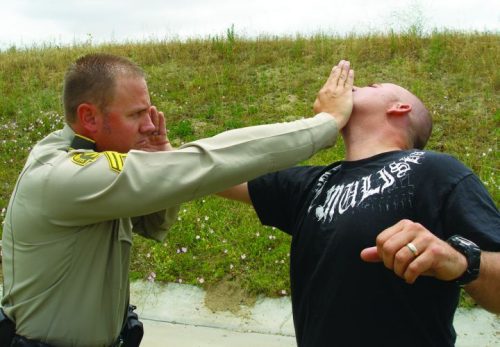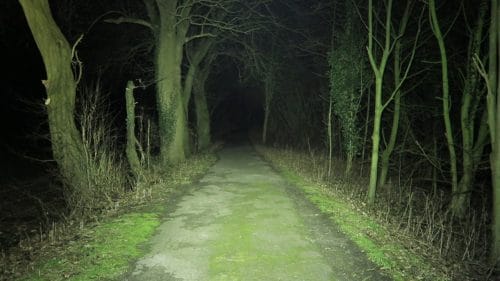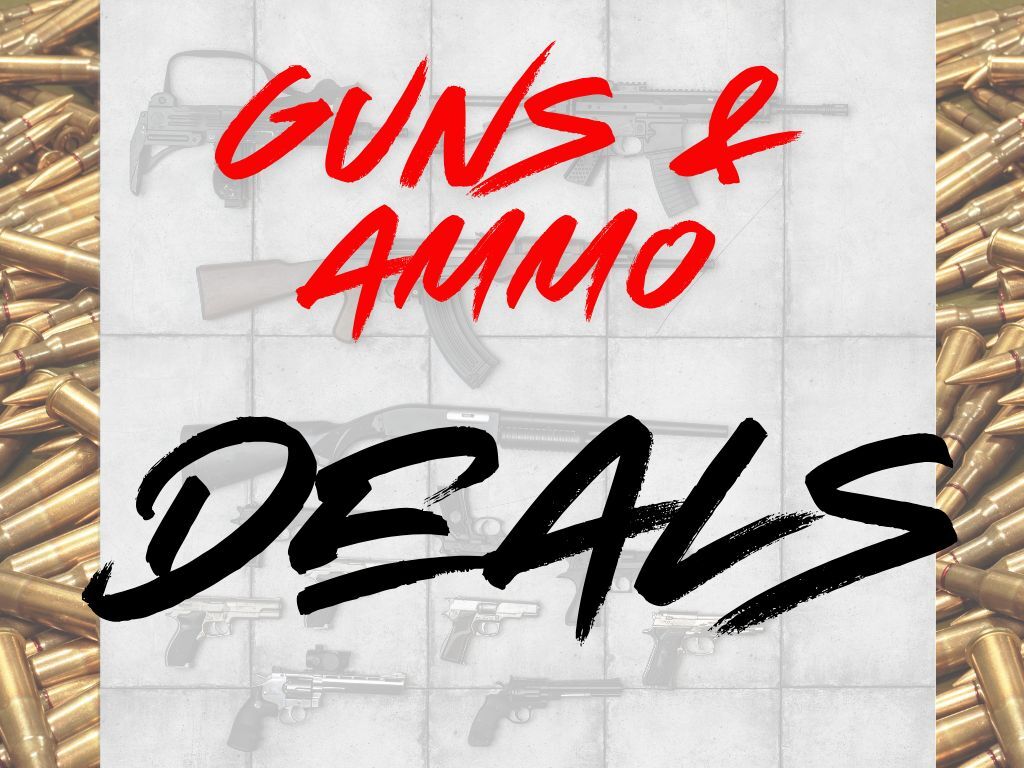All too often, when we think of the term “tactical,” we think of people who perform routine tactics on a daily basis—military, law enforcement, public safety officials. But tactical survival necessities that include gear and strategies can also apply to unpredictable situations that arise when we least expect it.
As an avid outdoorsman, I can tell you that there’s nothing more important than being prepared for any and all contingencies. Common tactical tools used by many civilians include flashlights and Swiss army knives, but self-defense tools are something that everyone should be carrying with them at all times.
When it comes to hunting or camping trips, the typical person will tell you to bring sunscreen and water, but they won’t tell you about the more esoteric essentials that could save your life. Today, I’ll tell you all about the 10 tactical necessities that can help you to survive and thrive.
Table Of Contents
#1—Water Purification Tools
You never know what life is gonna throw at you. If you find yourself lost or stranded in the wilderness and without a proper compass, you may be waiting for some time to find your way out or have rescuers reach you.
If you’re backpacking through the desert or hiking through the Redwoods, water is your best friend. Why? Because the sun is out to get you and water will have your back. Muscle cramps, dizziness, headache, increased heart rate and loss of coordination are just a few of the many symptoms of heat exhaustion, and dehydration plays right into this.
Forget bread, water is the true staff of life. Staying hydrated will assist in maintaining strength and sanity. But ingesting brackish water can do more harm than good. That’s why it’s a great idea to pick up a water purification tool like the LifeStraw Personal Water Filter.
With these straw-style filters, you can convert up to 4,000 liters of contaminated water into safe drinking water. It’s the perfect solution for the person who doesn’t want to lug around a bunch of bulky canteens or Thermoses.
A solid bonus amenity would be an electrolyte replacement drink. This will come in handy when you’ve been sweating your head off all day and need to replenish your cells in your tissue, nerves and muscles. There are tons of electrolyte drinks and mixes on the market including GO Electrolyte and Proper Water, most of which retail for under 20 bucks.
#2—Cordage
Cordage is a versatile tool for any SHTF scenario you may find yourself in. With a solid 550 parachute cord, you can hoist food overhead to prevent it from being carried away or devoured on site by wildlife. You can use it to construct emergency shelter. You can use it to splint a broken bone. Hell, you can even harness is for hunting down your dinner (as a fishing line or an animal trap).
There’s really no end to the possibility with proper cordage. Whether you utilize it for climbing or repairing a damaged tent, you’ll find that rope is an invaluable implement for all sorts of survival needs.
#3—Fire
It may seem like a no-brainer, but I can tell you from experience just how high fire ranks among survival necessities. I’m speaking specifically about waterproof fire solutions. When it comes to bushcraft, this should be the first thing you pack for any trip or tactical mission.
Last year, I rented a canoe and took it down the East branch of the Delaware River. I had anticipated a fun time gently floating down calm waters in the warm morning sun. What the rental guy had failed to mention was the whirlpool that occurs at a fork in the river.
As a result, the canoe went airborne, flipping over and launching me into the cold, murky water. After nearly seizing up, I managed to paddle my way to a small island between either side of the river and wrested the canoe up onto the land.
Most of my gear—a bag full of airsoft guns, ammo, prescription medications, sandwiches and fishing supplies—were lost to the rapids. Luckily, I was able to get my hands on the smaller of my two bags, inside of which I had thought to pack Tinder-Quik Fire Tabs and a water-resistant fire starter.
Let me tell you, when you’re shivering and chattering and you find yourself soaked to the bone in ice cold water, all you want is some quick warmth. But after landing in the drink, no book of matches is going to do you any good. Tinder-Quik Fire Tabs are effective because they are coated in a wax that’s impervious to water.
If I hadn’t had these two tools with me that day, it is quite likely I would have developed hypothermia.
#4—Firearms
As we’ve seen with the recent wildfires in California, looting and general bedlam loan themselves to the madness of natural disasters and economic collapse. Home invasions and the like can occur at any time, so how are you going to protect you and yours?
The answer is to obtain a viable survival rifle for self-defense. This is just as true for your camping or hiking expedition as it is for a domestic threat situation.
Whenever I venture out into the woods, I bring my Remington 700 along as a precaution. You can never underestimate man or beast, either of which can target you in the wild. Remington has a reputation for manufacturing high-quality rifles with pinpoint precision.
Most tactical rifles should be paired with top of the lines scopes or lasers so you can zero in on a potential threat before they’ve been alerted to your presence.
#5—Kick Ass
Speaking of hand-to-hand combat, it’s imperative that every self-proclaimed survivor familiarize themselves with some self-defense maneuvers. Knowledge is one of the most important survival necessities. Let’s face it, it’s almost inevitable that you’ll give up your position at some point, and it’s not as hard as you might think for an assailant to get the upper hand.
If the other guy knows something you don’t know, he might be able to wrestle that rifle away from you before you’re even aware that he’s there. There are many schools of martial arts that can be useful for fending off an attacker or taking them down.
Krav Maga Works
Personally, I have found Krav Maga to be the most practical for tactical contingency purposes. It operates as a sort of addendum to your natural instincts. Here are some examples of Krav Maga moves you can make to thwart the enemy.
- Open Hand Strike
- 360, AKA Outside Defense
- Attack on your Back
The open hand strike is quite simple and extremely effective. Using the heel of your hand to target some of the more vulnerable areas of your opponent’s head—face, eyes, front, and back of the neck—you take a punch-like action that can seriously throw your attacker off. This is especially true in the case of an open hand strike to your assailant’s eyes.
When attempting an open hand strike, never pull your arm back. Always keep your elbow in front of your ribs. This gives you an advantage because your opponent will not expect what is about to come.
Assailants invariably attack from behind because they’re looking to catch you off-guard. You can combat this by using the side of your wrist to hit them in a circular motion, creating space between the two of you by keeping your arm at a right angle.
If your assailant has already trounced you and you’re on the ground, use both of your feet to kick them back. Thrust your hips as you strike them. This will put more power behind the kick, launching them back and giving you the opportunity to get to your feet.
Self Defense Pressure Points
From here, there is any number of areas that you can target to fell your attacker or fend them off. The human body has lots of pressure points. Some examples that I’ve used include the clavicle bones at the top of the torso and the delicate bones of the foot.
When an attacker lunges at you, use the open hand strike method to their temples or right above their nose. This will send searing pain to their head and stun them. This will give you the time to hook your fingertips into the concave backs of their clavicle bones.
Latch onto these clavicle bones and drag them down to the ground like you’re shutting a window that doesn’t want to budge.
If your attacker sees you coming, their instinct will be to block any moves you make on their upper body. The simplest alternative is to get them where they won’t expect you to. The feet are the ideal option.
You can fake them out by curling your fists or raising your arm as if to punch them and, as their attention is drawn to that area, you can raise your boot up and bring all of your weight down where their foot meets their leg. This can shatter the small bones in their foot, thereby rendering them defenseless.
#6—Stuff It!
You can’t always construct a shelter or build a fire to keep warm. A true survivalist knows that you’re not always going to be conscious that you’re about to enter a survival situation. As such, you may find yourself in a situation where you don’t have all of the tactical tools you’d have if you were able to prepare for such an occurrence.
In such a case, the best thing you can do to stave off the cold is to insulate your clothing using natural materials. You can use anything from leaves or grass to bark or pine needles.
If the heat and power go out in your home during the winter, you can insulate yourself with common household items like packing peanuts, balled-up pieces of paper, or bubble wrap. In sub-degree weather, it’s always a good idea to leave home in layers. Invest in a pair of long johns and throw an extra sweater under your hoodie.
#7—Backpacker Hammock
While a hammock may not immediately come to mind when you think of survival necessities. A backpacker hammock can provide comfort when you’re camping, but it can also make all the difference if you end up in the elements and need to take cover. The average hammock can be easily dismantled for use in constructing a more elaborate shelter.
#8—Tactical Trauma Kit
Without a doubt, this can literally be one of the most important of all survival necessities. I mentioned earlier that cordage can serve as a DIY splint for broken bones, but if you’re breaking bones in the woods, you’re likely banged up in other ways as well. It’s always a good idea to keep a full field trauma kit on hand like the TOUROAM IFAK Molle Trauma Kit.
These kits can help your staunch bleeding, stabilize injuries and keep wounds clean. A top-of-the-line kit will contain gauze, pressure dressing, elastic bandages, and more.
A lot of the contingencies referenced on this list could be easily avoided with proper navigational tools. The most obvious example and often overlooked of the survival necessities is the compass, but compasses aren’t always reliable.
Today, one can purchase a GPS watch or a regular handheld GPS, that will tell them exactly where they are at all times. Modern Smartwatches like the Casio Men’s Pro Trek PRW2500R are tailored to rugged outdoor conditions and come with a built-in energy-saving GPS that shows you where you are on a color map regardless of the remoteness of your location.
#10—Let There Be Light!
Survival necessities number 10 is all about illumination. The only thing worse than boiling like an egg under the brutal rays of the sun is trying to find your way around under the blanket of night. Fortunately, for the savvy outdoorsman, there is no shortage of light solutions out there.
Headlamps like the Armytek Wizard Pro v3 deliver thousands of lumens. With constant cool-white brightness, they enable you to be consistent control of your surroundings.
Survival Necessities Closing Thoughts
There are many tools that you can serve you well—everything from a portable first aid kit and a whistle to flashlights and tinder. But implementing these tactical necessities will surely protect you when trouble strikes.
























